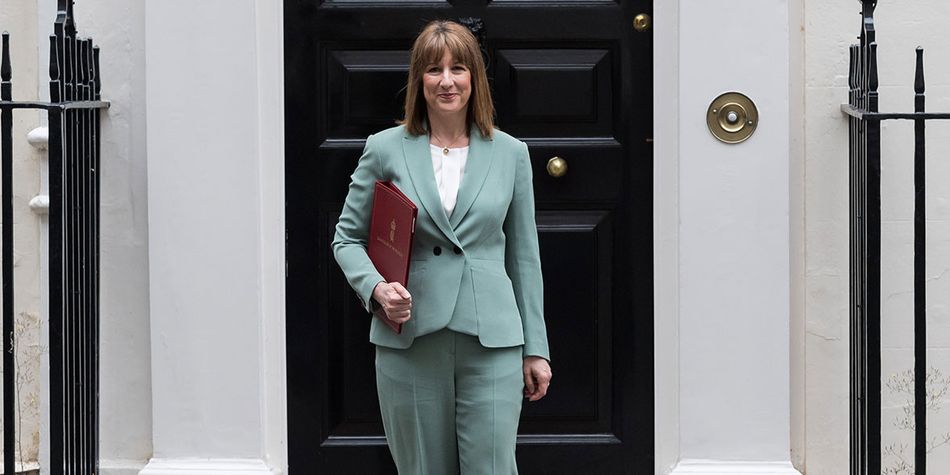By clicking a retailer link you consent to third-party cookies that track your onward journey. This enables W? to receive an affiliate commission if you make a purchase, which supports our mission to be the UK's consumer champion.
Should you take a lower savings rate to beat the taxman?
Money in a tax-free product could be earning you over £150 more in interest

Atom Bank has launched a new 4% cash Isa. It’s not market-leading, but this tax-free instant-access account could still deliver a higher take-home return than the best savings deals once HMRC takes its cut
That’s because, once tax is applied to any interest earned above your personal savings allowance, some savers could find their overall income is lower than if they’d put the same lump sum in a tax-free account instead.
The app-only provider’s new product lands as speculation grows that the £20,000 annual Isa allowance could be cut in the Autumn Budget. But can a cash Isa really help you build a bigger savings pot?
Isa vs savings: how do rates compare?
Isas, or individual savings accounts, allow you to save up to £20,000 each tax year without paying tax on interest or investment gains. There are four main types for adults, but the cash Isa remain the most popular option.
HMRC data shows almost 10 million people paid into a cash Isa in 2023-24 – up 26% year-on-year. They work much like regular savings accounts, offering both easy-access and fixed-rate options. However, dodging the taxman can often mean settling for a lower rate of savings interest.
This table shows the top instant-access and fixed-rate savings and cash Isa accounts. Results are ordered by term and exclude products with restrictions such as opening requirements and withdrawal limits.
| Instant access | Cahoot | 5% (a) | 61% | £1 | Internet | Monthly, yearly |
| Instant access cash Isa | Plum | 4.45% | n/a | £1 | Mobile app | Monthly |
| One-year fixed rate | LHV Bank | 4.46% | n/a | £1,000 | Mobile app | On maturity |
| One-year fixed rate cash Isa | Vida Savings | 4.28% | n/a | £1,000 | Internet | Monthly, anniversary |
| Two-year fixed rate | FirstSave | 4.45% | n/a | £1,000 | Internet | Monthly, yearly |
| Two-year fixed rate cash Isa | UBL UK | 4.16% | n/a | £2,000 | Branch, internet, mobile app, postal | Monthly, anniversary, on maturity |
| Three-year fixed rate | JN Bank | 4.39% | n/a | £100 | Internet | Yearly |
| Three-year fixed rate cash Isa | Secure Trust Bank | 4.13% | n/a | £1,000 | Internet | Yearly |
| Four-year fixed rate | JN Bank | 4.39% | n/a | £100 | Internet | Yearly |
| Four-year fixed rate cash Isa | UBL UK | 4% | n/a | £2,000 | Branch, internet, mobile app, postal | Monthly, quarterly, anniversary, on maturity |
| Five-year fixed rate | Secure Trust Bank | 4.4% | n/a | £1,000 | Internet | Yearly |
| Five-year fixed rate cash Isa | Secure Trust Bank | 4.23% | n/a | £1,000 | Internet | Yearly |
Table notes: rates sourced from Moneyfacts on 11 November 2025. Provider customer score is based on savers' overall satisfaction with the brand and how likely they are to recommend it to others. n/a means sample size was too small for us to generate a provider score. (a) 5% AER on balances up to £3,000.

Compare savings accounts
Find the right savings account for you using the service provided by Experian Ltd
Compare and choose- Find out more: best savings rates 2025
Why less can still mean more for cash Isas
A quick glance at the top rates shows savings accounts beat cash Isas across instant-access and fixed-term products. But accepting a lower rate of interest doesn't necessarily mean your returns will be less.
That's because, unlike Isas, savings account income above the personal savings allowance (PSA) is taxable. The threshold for a basic-rate taxpayer is £1,000 a year, while higher-rate taxpayers get £500. Additional-rate taxpayers have no allowance.
Once you factor-in the slice HMRC takes from your earnings, you may find you have more money in your pocket with a cash Isa that pays less interest than a savings account offering a higher rate. That's particularly true if you have a large lump sum to invest.
This table compares the net interest – that is, the amount you actually take home after tax – on £20,000 placed in a restriction-free cash Isa and a savings account for basic-rate and higher-rate taxpayers.
| Account type | Top rate | Net interest (basic-rate taxpayer) | Net interest (higher-rate taxpayer) |
|---|---|---|---|
| Instant-access savings account | 4.48% AER | £896 | £738 |
| Instant-access cash Isa | 4.45% AER | £890 | £890 |
| One-year fixed-rate savings account | 4.46% AER | £892 | £735 |
| One-year fixed-rate cash Isa | 4.28% AER | £856 | £856 |
Source: rates sourced from Moneyfacts on 11 November 2025. Analysis assumes savers' full annual PSA is available.
In this scenario, basic-rate savers with £20,000 in a top savings account wouldn’t face a tax bill on their returns, meaning the net interest is slightly higher than if they’d saved the same amount in a cash Isa.
However, savers paying the higher rate of income tax could earn significantly more with a tax-free product.
The top instant-access cash Isa could yield £152 more interest after a year than the current market-leading savings account, once tax is considered and assuming the variable rate stays the same. The difference between a one-year fixed cash Isa and a savings account is £121.
Atom Bank’s new Easy Access Cash Isa lags behind competitors with a rate of 4% AER. However, the annual net return for a higher-rate taxpayer totals around £800 for a £20,000 nest egg – almost £100 more than if they placed the same amount in the top instant-access savings account once tax is deducted.
Should you worry about Budget rumours?
Rumours that Chancellor Rachel Reeves will announce tax rises and major cash Isa reforms in the upcoming Autumn Budget may be fuelling savers' appetite for accounts that help reduce a bill from HMRC.
Reports claim one option being considered by the government is a 2p hike to the basic-rate of income tax – from 20% to 22%.
Reeves has also made it clear that she wants more people to invest rather than save in cash. That's prompted speculation that the cash Isa allowance could be reduced – potentially to £10,000. Earlier proposals had even suggested a £4,000 cap.
Read our regularly updated Autumn Budget story for the latest rumours.

Make your money work harder
Get the best deals, avoid scams, and grow your savings with expert guidance. £4.99 a month or £49 a year, cancel any time.
Join Which? Money3 other ways to maximise tax-free returns
We won't know for sure what Chancellor has planned until she unveils her fiscal plan on 26 November. But you don't need to wait until then to open an Isa.
Here are a number of ways you can make the most of your £20,000 annual tax-free allowance:
1. Lock-in for long-term returns
Locking your savings away in a fixed-term cash Isa will guarantee you the same rate for longer.
While interest on cash Isas tends to get a boost in the spring, the future outlook looks less certain, with rates on other types of account falling.
If you're worried about putting all your eggs in one basket, you could take advantage of rules that allow you to open multiple Isa accounts of the same type.
You can place a portion of money in a fixed-term Isa and another chunk in an instant-access account, which you can easily dip into in emergencies or move to another product if you see a better deal later.
If you've got savings you won't need for at least five years, you may earn a better return by investing with a stocks and shares Isa instead.
2. Consider other taxes
While opening a cash Isa will help shield your savings from income tax, a stocks and shares Isa can help you sidestep paying capital gains tax (CGT) on your investments.
Plus, any income such as interest or dividends will also be free from tax.
- Find out more: best stocks and shares Isa rates
3. Compound any interest
Compound interest is when your earned interest is added to your balance – helping you earn even more over time.
The sooner you start saving, the longer your money has to benefit from compounding. So don’t wait around for better rates if you’ve got money ready to save now.



